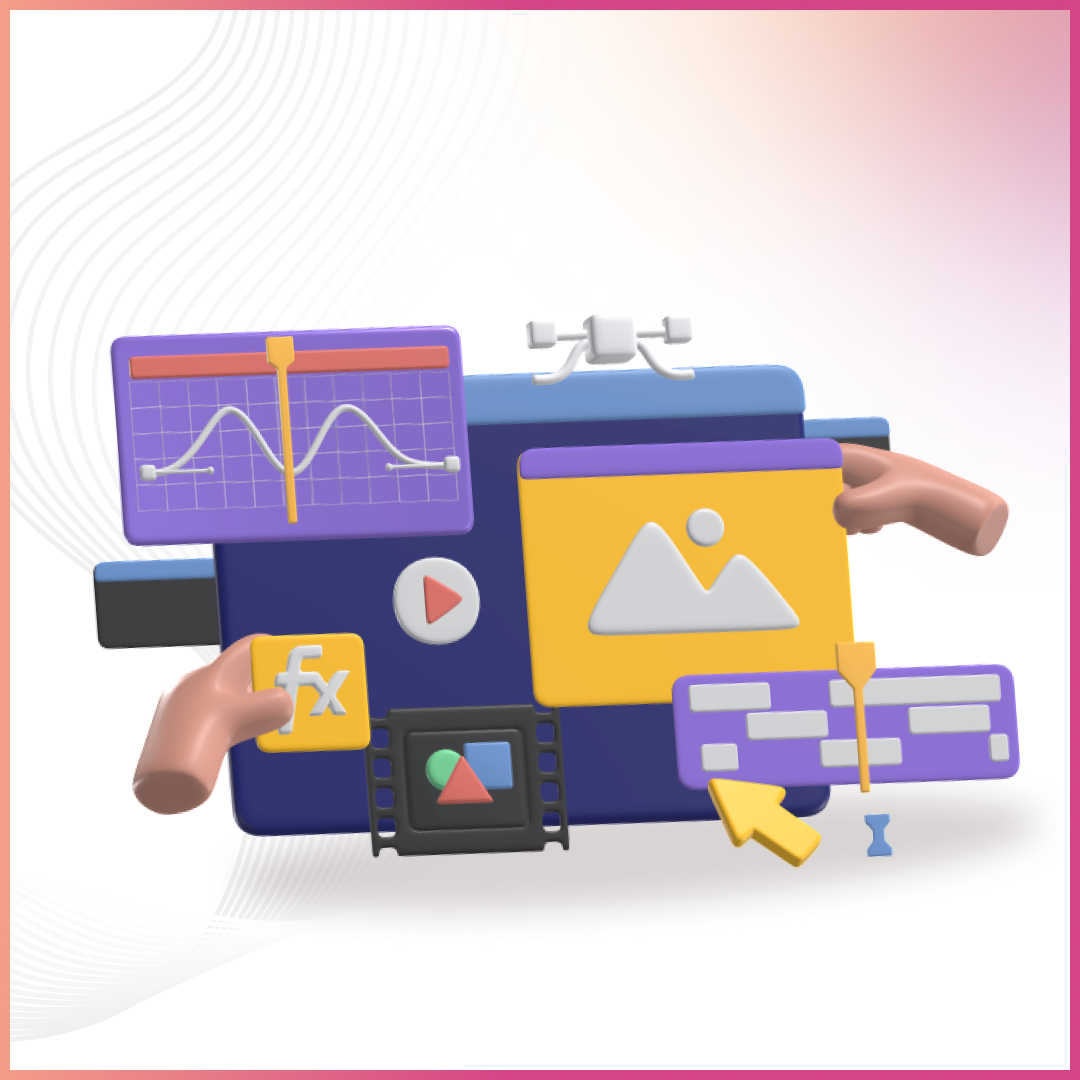Introduction
Our interaction with visual content has been completely transformed by motion graphics. What started out as straightforward animations and static images has evolved into dynamic, immersive designs that captivate viewers across digital platforms. Motion graphics are now an essential part of storytelling in branding, entertainment, and advertising, enhancing visual communication with interactivity, emotional depth, and engagement.
The evolution of motion graphics reflects technological advancements and shifting consumer preferences. The transition from still images to animated motion was driven by the need for more engaging, attention-grabbing content. With the rise of digital media, motion graphics have expanded into artificial intelligence (AI), augmented reality (AR), and virtual reality (VR), shaping the future of digital experiences.
In this blog, we will explore the journey of motion graphics, from its early days in static design to the dynamic, data-driven visuals that dominate today’s digital landscape.

The Early Influence of Static Design
The Foundation of Graphic Design
Before the rise of motion graphics, static design was the foundation of visual communication. Print advertisements, posters, and editorial layouts relied on typography, imagery, and color theory to capture attention and convey messages. Graphic design movements such as Bauhaus and Swiss Style introduced the use of clean lines, geometric shapes, and bold typography, which would later influence motion design.
Saul Bass and Kinetic Typography
One of the most significant early contributors to motion graphics was Saul Bass, a visionary designer known for his cinematic title sequences that transformed how text and imagery interacted on screen. His work introduced the concept of kinetic typography, where words and graphics moved dynamically rather than remaining static. This was a game-changer, as it demonstrated how motion could enhance storytelling and create a stronger emotional impact.
Television and Branding
Television networks began experimenting with animated logos and transitions, paving the way for motion graphics to become a staple in branding and broadcast media. As technology improved, designers sought new ways to create engaging visual content, setting the stage for motion graphics to evolve beyond simple text animations.

The Shift to Motion Graphics
The Role of Digital Technology
The shift from static to motion-based designs gained momentum with advancements in digital technology. As computer graphics software became more powerful, designers gained greater creative freedom to experiment with animation, special effects, and interactive visuals.
The Impact of Adobe After Effects
One of the most pivotal developments was the release of Adobe After Effects, a software that allowed designers to create motion graphics with ease. This tool democratized animation, making it accessible to designers who previously required specialized skills in traditional animation techniques. With features like keyframe animation, motion tracking, and 3D effects, After Effects enabled designers to bring static visuals to life effortlessly.
The Emergence of 3D Animation
In addition to After Effects, 3D animation became a dominant force in motion design. Instead of relying solely on 2D graphics, designers began using Cinema 4D, Autodesk Maya, and Blender to create three-dimensional animations with depth, texture, and realism. 3D motion graphics opened up new possibilities for storytelling, allowing brands to showcase products and concepts in a more immersive way.
Flash Animation and Web Interactivity
Another significant innovation was Flash animation, which allowed designers to integrate motion graphics into websites, Billboards & Banner Design, and digital experiences. Flash made motion graphics more interactive, as animations could respond to user actions, making them an essential component of early web design and digital marketing campaigns.

The Rise of Dynamic Motion Graphics
The Influence of Social Media
In today’s digital landscape, motion graphics have become more dynamic, interactive, and data-driven. The demand for video-first content has skyrocketed, pushing motion design to new levels of creativity and complexity. Several key factors have contributed to this shift.
Social media platforms like Instagram, TikTok, and YouTube have transformed how audiences consume content. With shorter attention spans, brands and creators rely on motion graphics to grab attention within seconds.
Key Trends in Dynamic Motion Graphics
- Explainer Videos – Break down complex topics in an engaging way.
- Animated Infographics – Present data visually rather than through static text.
- Kinetic Typography – Make text-based storytelling more compelling.
These have become essential for marketers, influencers, and businesses looking to increase engagement and retention.

AI & Automation in Motion Graphics
AI-Powered Animation Tools
The integration of AI and automation has significantly impacted motion graphics design. AI-powered tools like Runway ML and DeepMotion now allow designers to create automated animations with minimal effort. These tools use machine learning to predict movement, auto-generate animations, and personalize content based on user data.
The Role of AI in Streamlining Motion Design
Additionally, AI-powered motion templates have made it easier for businesses to create professional animations without requiring advanced design skills. This has led to an explosion of motion graphics in marketing campaigns, product showcases, and interactive experiences.
Integration
Augmented Reality in Motion Graphics
Augmented Reality (AR) and Virtual Reality (VR) are reshaping motion graphics, pushing the boundaries of traditional animation. Companies like Apple, Meta, and Google are investing in AR-driven experiences that incorporate motion graphics into real-world interactions. For example, AR filters and holographic animations are becoming popular in social media marketing.
The Role of VR in Storytelling
- VR Storytelling – Allows users to engage with fully animated environments in a more immersive way.
- Interactive UI Animations – Enhance digital experiences by making interfaces more intuitive and visually appealing.
As these technologies continue to evolve, motion graphics will become an even more integrated part of digital user experiences.
The Future of Motion Graphics
Key Trends Shaping Motion Graphics
The future of motion graphics is driven by innovation, technology, and changing user behaviors. Here are some key trends that will shape the industry:
- AI-Driven Motion Design – AI-powered animation software will allow designers to generate complex motion graphics faster and with greater precision.
- Photo-Realistic 3D Graphics – Advancements in rendering technology will lead to digital content that looks more lifelike than ever before.
- Interactive Motion Graphics – Web and app design will continue to embrace interactive animations, making digital interactions more engaging.
- Metaverse & Virtual Experiences – As the metaverse develops, motion graphics will play a key role in shaping digital environments, from animated avatars to virtual storefronts.
Conclusion
The transformation from static graphics to dynamic motion design has redefined digital storytelling. Businesses looking to thrive in this space must embrace cutting-edge technology and user-centered design principles. By leveraging AI, AR, VR, and interactive experiences, companies can create compelling motion graphics that engage audiences and drive success in the digital era.






